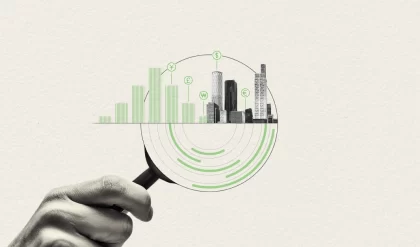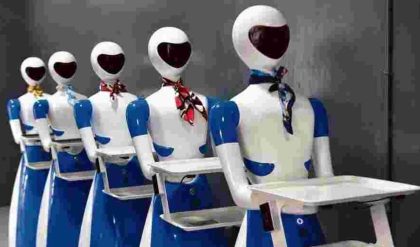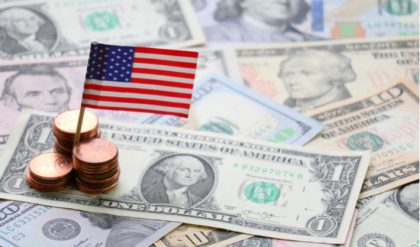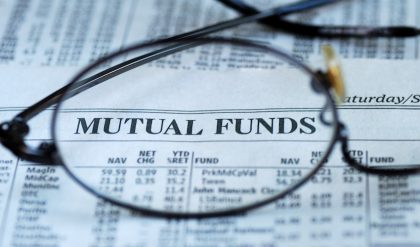The political opposition that prompted Amazon to walk away from building a corporate headquarters in New York City featured a touchstone of the progressives’ economic agenda: ending tax policiesthat unfairly reward and pamper the wealthy.
But it also exposed a political vulnerability, leaving unclear what alternative strategy they are offering to encourage growth and create the thousands of jobs that Amazon promised to bring to the city.
The clash has consequences far beyond New York, going to the heart of a national debate that is likely to dominate the 2020 presidential race: What is the best way to spread prosperity?
As Gov. Andrew M. Cuomo fumed that some of his fellow Democrats put “the state’s economic future” at risk, others inside and outside the party saw the scuttled project as evidence that the left doesn’t understand how to generate growth. In a tweet, Lloyd Blankfein, senior chairman of Goldman Sachs, lashed out at progressive Democrats, labeling them as both “anti-progress” and “anti-Democratic.”
Those views feed into a powerful, long-held narrative popularized by Ronald Reagan that Democratic policymakers had — as then-Senator Barack Obama put it in 2006 — become “more obsessed with slicing the economic pie than with growing the pie.”
For Republicans, Amazon’s retreat is an opportunity to revive beloved barbs and brand Democrats as “job killers” who are all too eager to “tax-and-spend.” Lower taxes for investors and business owners, they argue, is what spurs entrepreneurs to create jobs and spread the wealth.
For progressives, defeating a plan that handed tax incentives to a trillion-dollar tech titan is part of a broader effort to discredit what they see as bankrupt economic policies. They argue that workers and the government — two players that have been relegated to the background — should be treated as important engines of growth.
Many objections raised in New York by critics like Alexandria Ocasio-Cortez, the freshman congresswoman whose Queens district borders the neighborhood where Amazon was headed, align with economic critiques offered by Democratic presidential contenders. Senator Bernie Sanders of Vermont and Senator Elizabeth Warren of Massachusetts, for example, have frequently railed against the outsize power of corporations and lopsided tax cuts and incentives that favor the wealthy.
Ms. Warren called the state subsidies in the Amazon deal “taxpayer bribes,” while Mr. Sanders said, “This is what the rigged economy is all about.” New York was offering nearly $3 billion in subsidies to Amazon, a company that last year effectively paid half the 21 percent federal corporate tax rate.
At the same time, presidential hopefuls have supported policies that bolster workers and the middle class, like an increased minimum wage and rules that ensure overtime pay, as well as substantial public investment. Democrats on the left are also floating ambitious proposals like free college for all, a federal job guarantee, an industrial plan to retool the country’s energy use and higher taxes on the wealthy.
The groundwork for these ideas was prepared in recent years by a network of liberal economists, thinkers and activists at research organizations and universities interested in developing a set of policies to displace supply-side economics and trickle-down theory.
“The interaction between market and collective action is what leads to our prosperity,” said Joseph Stiglitz, a Nobel-prize winning economist who is coming out with a book about growing the economy in the 21st century. Advances in science and technology, for example, rest on basic research that was first funded by the government and then brought to market by the private sector.
Mr. Stiglitz argues this is the kind of alternative explanation of how growth occurs that the Democratic Party needs to offer more vocally. Souped-up competition, lower taxes on the wealthy and hands-off financial regulation, he maintains, have failed to deliver on their promise to supercharge the economy and broadly lift incomes.
Nick Hanauer, a Seattle venture capitalist who was an early investor in Amazon and is now a progressive activist and writer, argues that trickle-down theory should be replaced with what he and Eric Liu, a former adviser in Bill Clinton’s administration, call “middle-out economics.”
“I believe capitalism is the greatest social technology ever created for generating wealth and prosperity,” he said, “but we’ve confused what’s good for the narrow-short-term interest of a few capitalists for what’s good for capitalism.”
The notion that tax cuts for the rich are what cause economic growth and create a thriving middle class is “both wrong and backwards,” Mr. Hanauer said. “The thriving middle class is the cause of economic growth.”
The ideas that are capturing attention, particularly in the run-up to the 2020 election, focus more directly on the fortunes of workers and give the government a much more central role in spurring economic growth and distributing wealth.
The approach reaches back to the era of Franklin D. Roosevelt for inspiration. The major effort to alter the course of climate change was purposely named the “Green New Deal” — after Roosevelt’s signature policy — precisely for that reason. Several versions of the program exist, but the one introduced by Representative Ocasio-Cortez and Senator Ed Markey of Massachusetts includes “a job guarantee program to assure a living wage job to every person who wants one.”
During the recession’s grimmest months, President Obama pushed to fast-track a multibillion-dollar stimulus package — the American Recovery and Reinvestment Act of 2009 — aimed at creating jobs and spending money on transportation, technology and energy projects. Although the plan was smaller than several left-leaning Democrats wanted, it rested on a shared assumption that cranking up public investment would get the economy moving and put people back to work.
How such policies will play out at a time when the unemployment rate has settled in at a low 4 percent will be a source of tension among the party’s various factions. In the past, Democrats have pushed such stimulants during periods of economic weakness. And specific proposals offered by progressives, whether free college or a wealth tax, cause some Democrats to blanch.
Nonetheless, many Democrats acknowledge that political and business leaders have tended to focus too narrowly on the winners of pro-growth policies like free trade without paying sufficient attention to losers like laid-off factory workers. It’s a theme that President Trump successfully pushed on the campaign trail in 2016.
“You organize the economy so workers have more power that allows them to get fair wages and safe living standards” so they’re not outgunned by corporate power, said Jacob Leibenluft, who led Hillary Clinton’s economic policy team during her presidential campaign and is now executive vice president for policy at the Center for American Progress, a liberal research institute.
Democratic centrists and self-described pragmatists now also widely subscribe to critiques of the dominant economic policies of the last couple of decades — particularly that tax policy has not produced vigorous growth. A consensus has also taken shape that the government needs to play a larger role in the economy, raising taxes, investing in public institutions and, to some degree, redistributing income.
Two pillars of the Democratic establishment — Lawrence Summers, Treasury secretary during the Clinton administration and the director of President Obama’s National Economic Council, and Jason Furman, chairman of the Council of Economic Advisers during the Obama administration — have called for significant public spending on infrastructure, education, health care and more to address slow economic growth and sidelined workers.
“Government has to play an important role,” said Mr. Furman, who wrote an article with Mr. Summers last month about putting such policies ahead of reducing the deficit. “If you’re spending more, you have to tax more.”
For many Democrats, the shift to a more activist role is overdue. Yet it also comes at a time when the public’s trust in government has dropped to historic lows, according to a December 2017 report from the Pew Research Center.
Only 18 percent of Americans said they trust the federal government to do the right thing “just about always” or “most of the time.”






Comments are closed.